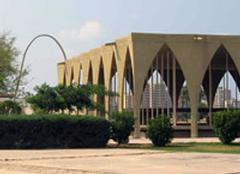Stage 2: SemifinalistsWe are happy to announce that 25 contestants have advanced to the Semifinalist round (Stage Two) of the BERKELEY PRIZE 2010 competition. Architecture students from 26 countries entered this year's competition. Semifinalists are invited to submit a 2500-word essay based on their 500-word Proposal. The top five to seven essays will be selected for final judging by the BERKELEY PRIZE Jury. Semifinalist WinnersSusan Bopp, University of Michigan, USA Calvin Chua, Architectural Association School of Architecture, UK Jessica Clark, University of California Berkeley, USA Tara Gaskin, Dalhousie University, Canada Yi?itcan Karanfil, Bahçe?ehir University, Turkey Mehrnoosh Khalooghi and Ehsan Sakhinia, lIslamic Azad University of Qazvin, Iran Matthew Lam, University of New South Wales, Australia Wenli Low and Andrew Lim, National University of Singapore, Singapore Zachary Massad, Lawrence Technological University, USA Jessica Marcellus, Dalhousie University, Canada Lillian Namugaya, Makerere University, Uganda Nicole Newman, Dartmouth, USA Ishanie Niyogi, Birla Institute of Technology, India Marina Sapunova, Vladimir State University, Russia Arlie Schrantz, Carnegie Mellon University, USA Naweera Sidik and Nina Katrina Mohamed Hosain, National University of Singapore, Singapore Holly Simon, Dalhousie University, Canada Katlyn Springstead, University of Notre Dame, Italy Aimee Sunny, University of Notre Dame, USA Michael Swords, Dublin School of Architecture, Ireland Justin David Tan, University of Santo Tomas, Philippines Felicia Toh, National University of Singapore, Singapore Robert Ungar, Bezalel Academy of Art and Design, Israel Erica Witcher, University of Washington, USA Pek Ling Yong and Ng Qianzhi, National University of Singapore, Singapore Instructions to SemifinalistsWe compliment all of the Semifinalists on the extraordinary diversity of ideas and approaches in response to this year’s Question. Such responses indicate the depth of interest in and concern for Architecture as a Social Art. As an essay competition, the BERKELEY PRIZE encourages the translation of these interests and concerns into a format for communication both to those within the profession and the wider public. General InformationIn Stage Two, you are to expand upon your chosen topic in 2,500 words. The BERKELEY PRIZE Committee encourages Semifinalists to improve the crafting of their ideas. A few suggestions seem appropriate:
IllustrationThis year, we are asking that you include ONE basic digital photograph of your selected building(s) or place with your essay. The photograph should be no larger then 1 MB, and be in ,jpeg format. No more then one photograph will be accepted. There is space provided at the end of the submittal form to upload the image. You can use a digital camera, a film camera (and scan the printed image), or even capture the image on a cell phone and transfer it to your document. The photograph should be as informative as possible in order to enable those reading the essays to determine how well you have described your subject matter. The Readers and Jurors are instructed NOT to add or detract points from their evaluation because of the quality of the photograph itself. To the contrary, one of the primary purposes of the essay format is to test your skill in describing a building in words, rather then pictures or drawings. So, do not assume that just because you have posted the photograph that your responsibility to describe your selected building is completed. As with the readers, use the photograph to continually reference how good a job you have done in describing your selected building(s) or place in words. Improving Your WritingYou have almost six weeks to produce your essay in final form. Use at least four of these weeks creatively to improve your writing abilities in English. Use as much of this time as possible to attempt to actively improve your writing abilities. Read some good prose written in English, particularly essays, whether from the field of architecture or from other disciplines. In architecture, search for articles written by architectural journalists and popular architectural historians who write for a general audience in newspapers and widely circulated magazines. Think about how they present arguments and describe buildings. Avoid the use of professional language unfamiliar to many of your intended readers, except where absolutely necessary. Above all, avoid jargon. In describing your subject matter you might want to use this “trick”: Imagine that you are describing the building(s) or place to a person who, unfortunately, lost their sight after years of being able to see. How would you describe this new building(s) or place to them using only their memories of how other places looked? Use the websites listed below to improve your English vocabulary, syntax, and spelling . Whether or not English is your first, second, or fifth language, do not hesitate to review your essay with an experienced English language-speaker and writer. Use their suggestions as how to make your argument as clear and precise as possible. Additional Help and InformationAre you in need of assistance? Please email info@berkeleyprize.org. |
|

